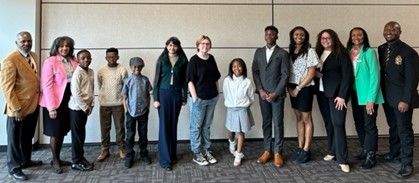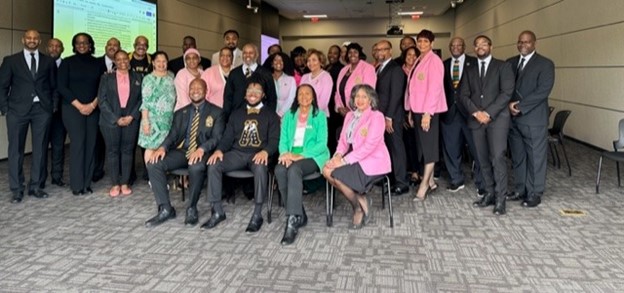With a 30-year legacy of uplifting the next generation of diverse real estate executives, the USC Lusk Center for Real Estate’s Ross Program announces 18 new graduates for their 2023 winter session. Since its launch in 1993, the program has graduated over 1,000 students and remains a pivotal academic asset to equip professionals with critical real estate development and finance skills.
“Through rigorous curriculum and real-world case studies, the Ross Program prepares real estate professionals with the next steps they need to advance their career or upskill their talents in real estate finance and development,” said Richard K. Green, director of the USC Lusk Center for Real Estate, who oversees the Ross Program. “Program graduates leave with a very practical skill set.”
After the Rodney King verdict and the civil unrest that followed in 1992, USC and the Community Redevelopment Agency of Los Angeles (CRA) recognized the unprecedented and immediate need for experienced real estate professionals to aid in the rebuilding parts of South Los Angeles. At the time, CRA found a lack of minority developers and joined with community leaders and USC to create a program to help foster diverse talent in real estate development. The name Ross honors the late Stan Ross, a well-known icon in the accounting and real estate industry responsible for funding the program’s endowment and an outspoken role model in the industry for students and professionals alike.
The following graduates for the 2023 winter session received the crucial skills to navigate affordable housing, office, retail and mixed-use spaces. Graduates include:
Violeta Aguilar-Wyrick, founder and principal of Xara Public Affairs
Emmanuel Choice, senior asset manager of Decro Corporation
Matej Dlabal, architectural designer for ZGF
Greg Elliott, president of Anderson Howard
Hugo Escalante, real estate broker and broker associate for RE/MAX Top Producers
Alexander Fung, senior management analyst for the City of Eastvale
Armida Garcia, real property coordinator of the Los Angeles County Development Authority
Landy Joseph, project manager for West Hollywood Community Housing Corporation
Kevin Lee, library district director of the Banning Library District
Maricela Marquez, community development analyst for the City of Santa Ana
Pauline Martinez, administrative assistant to Dr. Manuel Castells, University Professor for the University of Southern California
Luis Melo, California realtor for Solid Work Properties LLC.
Meredith Sharkey, management analyst for the San Gabriel Valley Council of Governments / San Gabriel Valley Regional Housing Trust
Rubani Shaw, production designer for IDEO
Terrence Smalls, CA Realtor and founder of Reche Capital
Christina Sutton (PMP, PMI-ACP), founder of O’thentik Designs
Omar Taylor, president of Nobis Management
Gina Gibson-Williams, community development and public works director for the City of Eastvale
The Ross Program continues to arm professionals with advanced real estate fundamentals and enables members of underrepresented groups and those that invest resources in emerging communities to further their careers. In the program’s 2023 winter session, 38% of graduates were black, nearly half were women and about 33% were Hispanic.
For more information or to apply for the 2023 summer session, please visit https://lusk.usc.edu/ross.
About the USC Lusk Center: The University of Southern California Lusk Center for Real Estate seeks to advance real estate knowledge, inform business practice, and address timely issues that affect the real estate industry, the urban economy, and public policy. The Lusk Center produces relevant and timely real estate research, supports educational programs for students and executives, and convenes professional forums that bring together academics, students, business executives, and community leaders. For more information, please visit www.usc.edu/lusk.
 Westside Story Newspaper – Online The News of The Empire – Sharing the Quest for Excellence
Westside Story Newspaper – Online The News of The Empire – Sharing the Quest for Excellence



